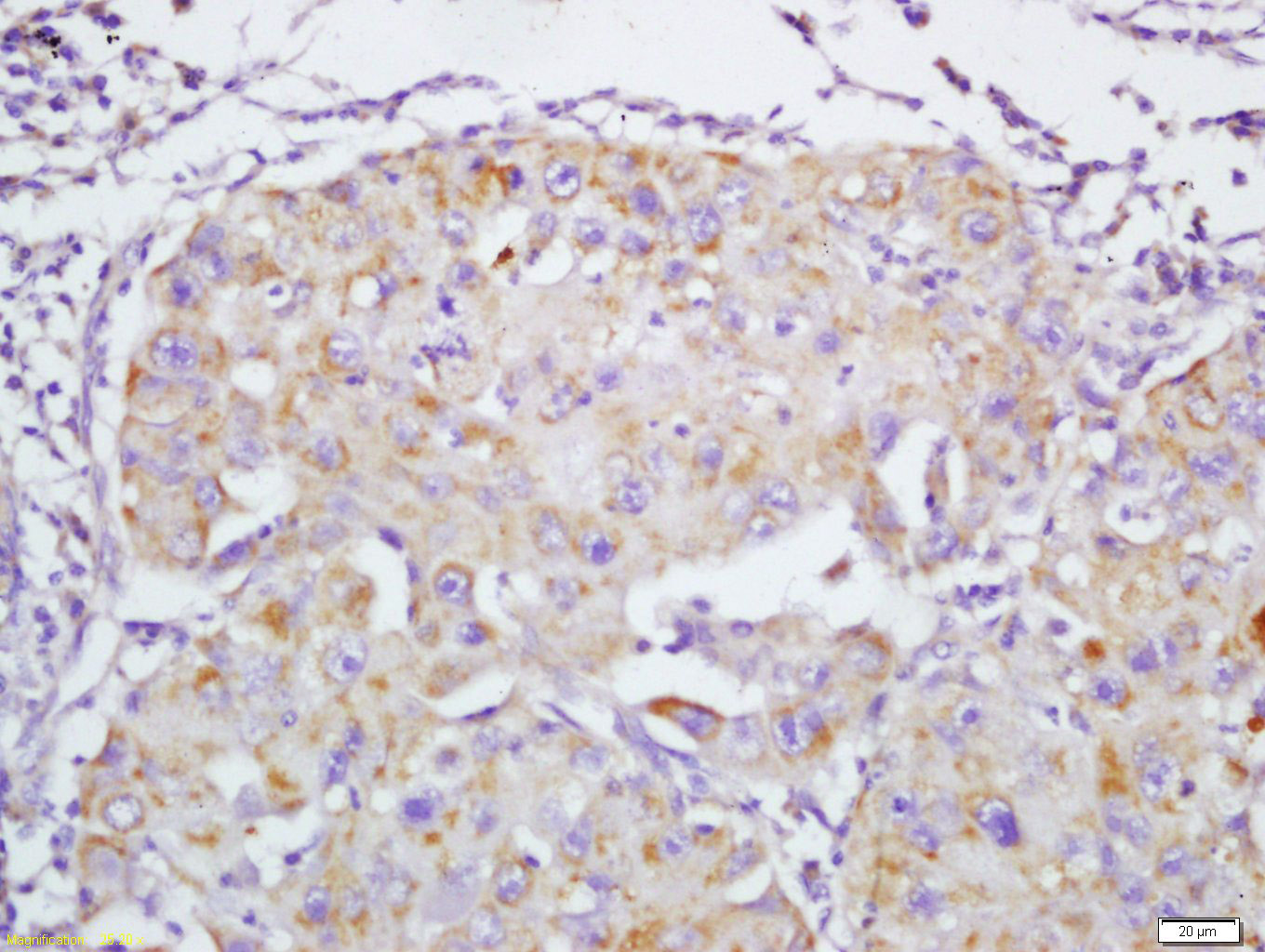
Rabbit Anti-ANT-1 antibody
heart/skeletal muscle isoform T1; Adenine nucleotide translocator 1 (skeletal muscle); Adenine nucleotide translocator 1; ADP; ADP ATP carrier protein 1; ADP ATP carrier protein heart/skeletal muscle isoform T1; ADP/ATP translocase 1; ADT1_HUMAN; ANT 1; A
View History [Clear]
Details
Product Name ANT-1 Chinese Name 腺嘌呤核苷酸Transporter1抗体 Alias heart/skeletal muscle isoform T1; Adenine nucleotide translocator 1 (skeletal muscle); Adenine nucleotide translocator 1; ADP; ADP ATP carrier protein 1; ADP ATP carrier protein heart/skeletal muscle isoform T1; ADP/ATP translocase 1; ADT1_HUMAN; ANT 1; ANT; ANT1; ATP carrier protein 1; ATP carrier protein; MSA02; PEO2; PEO3; SLC25A4; Solute carrier family 25 member 4; T1 antibody. Research Area Cell biology immunology Neurobiology Signal transduction Apoptosis Cell type markers G protein signal Immunogen Species Rabbit Clonality Polyclonal React Species Human, (predicted: Mouse, Rat, Dog, Pig, Cow, Rabbit, Sheep, ) Applications ELISA=1:5000-10000 IHC-P=1:100-500 IHC-F=1:100-500 IF=1:100-500 (Paraffin sections need antigen repair)
not yet tested in other applications.
optimal dilutions/concentrations should be determined by the end user.Theoretical molecular weight 33kDa Cellular localization cytoplasmic The cell membrane Form Liquid Concentration 1mg/ml immunogen KLH conjugated synthetic peptide derived from human ANT-1: 31-130/298 Lsotype IgG Purification affinity purified by Protein A Buffer Solution 0.01M TBS(pH7.4) with 1% BSA, 0.03% Proclin300 and 50% Glycerol. Storage Shipped at 4℃. Store at -20 °C for one year. Avoid repeated freeze/thaw cycles. Attention This product as supplied is intended for research use only, not for use in human, therapeutic or diagnostic applications. PubMed PubMed Product Detail Defects in SLC25A4 are a cause of progressive external ophthalmoplegia with mitochondrial DNA deletions autosomal dominant type 2 (PEOA2) [MIM:609283]. Progressive external ophthalmoplegia is characterized by progressive weakness of ocular muscles and levator muscle of the upper eyelid. In a minority of cases, it is associated with skeletal myopathy, which predominantly involves axial or proximal muscles and which causes abnormal fatigability and even permanent muscle weakness. Ragged-red fibers and atrophy are found on muscle biopsy. A large proportion of chronic ophthalmoplegias are associated with other symptoms, leading to a multisystemic pattern of this disease. Additional symptoms are variable, and may include cataracts, hearing loss, sensory axonal neuropathy, ataxia, depression, hypogonadism, and parkinsonism.
Subunit:
Found in a complex with ARL2, ARL2BP and SLC25A4. Interacts with ARL2BP (By similarity). Homodimer. Interacts with HIV-1 Vpr.
Subcellular Location:
Mitochondrion inner membrane; Multi-pass membrane protein.
DISEASE:
Defects in SLC25A4 are a cause of progressive external ophthalmoplegia with mitochondrial DNA deletions autosomal dominant type 2 (PEOA2) [MIM:609283]. Progressive external ophthalmoplegia is characterized by progressive weakness of ocular muscles and levator muscle of the upper eyelid. In a minority of cases, it is associated with skeletal myopathy, which predominantly involves axial or proximal muscles and which causes abnormal fatigability and even permanent muscle weakness. Ragged-red fibers and atrophy are found on muscle biopsy. A large proportion of chronic ophthalmoplegias are associated with other symptoms, leading to a multisystemic pattern of this disease. Additional symptoms are variable, and may include cataracts, hearing loss, sensory axonal neuropathy, ataxia, depression, hypogonadism, and parkinsonism.
Similarity:
Belongs to the mitochondrial carrier family.
Contains 3 Solcar repeats.
SWISS:
P12235
Gene ID:
291
Database links:Entrez Gene: 291 Human
Omim: 103220 Human
SwissProt: P12235 Human
Unigene: 246506 Human
Product Picture
Antigen retrieval: citrate buffer ( 0.01M, pH 6.0 ), Boiling bathing for 15min; Block endogenous peroxidase by 3% Hydrogen peroxide for 30min; Blocking buffer (normal goat serum,C-0005) at 37℃ for 20 min;
Incubation: Anti-ANT-1 Polyclonal Antibody, Unconjugated(SL6794R) 1:200, overnight at 4°C, followed by conjugation to the secondary antibody(SP-0023) and DAB(C-0010) staining
References (0)
No References
Bought notes(bought amounts latest0)
No one bought this product
User Comment(Total0User Comment Num)
- No comment



 +86 571 56623320
+86 571 56623320
 +86 18668110335
+86 18668110335

